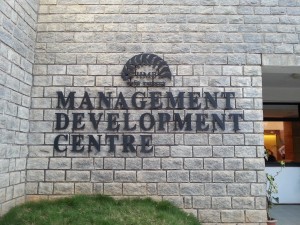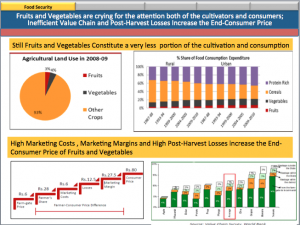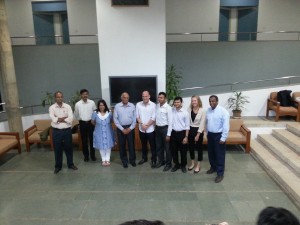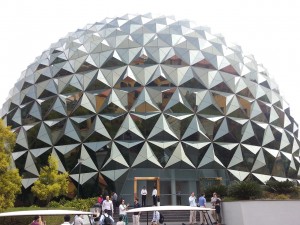This post is a continuation, and will make reference to my previous post entitled “Is the world really flat?” It might make more sense to read that one first.
Our early visit to 2adpro had me thinking… if India is no longer the world’s lowest-cost option for tech-oriented outsourcing, and Indian companies are now forced to offer higher-level management solutions to their global customers, then Indian MBAs must have their hands full managing this change and injecting cutting-edge business practices into the Bangalore economy.
We had the opportunity to go to the India Institute of Management Bangalore (IIMB). Although many North Americans aren’t familiar with the name, IIMB carries the reputation of a Harvard or Stanford in India. In fact, due to India’s massive population, IIMB has a far lower acceptance rate for its applicants than Harvard. We were assigned to work in four- or five-person groups with IIMB students and recent Deloitte hires, and create potential recommendations to address malnutrition in India. In general, our IIMB group members were more familiar with the case material than us when we arrived at IIMB, and our Indian colleagues at Sauder had raved about the renowned reputation and ability of IIMB students. Frankly, I had some concerns that we might be overmatched by our Indian counterparts, and figured I would just have to “follow along” and contribute where possible. I don’t think I was alone in holding this preconception.
As was frequently the case in India, my preconceptions proved inaccurate. After working with the IIMB students a little, I had this impression of our colleagues: they clearly had unbelievable work ethic (they were participating in this case competition during finals week, and frequently had to leave to interview with major international employers, and they still produced an unbelievable quantity of research material), they had less work experience than us (although some was required, many had worked less than a year since their undergrad), and they were still fairly inexperienced with giving business presentations, especially in a North American style. I will point out that North American and Indian business presentations seemed noticeably different throughout our trip, so perhaps I’m incorrect in criticizing our IIMB teammates for their lack of experience. Nevertheless, rather than attempting to deliver an easy-to-follow, well-timed presentation that flowed into straightforward recommendations, many groups struggled to limit the amount of information being crammed onto our powerpoint slides. One group attempted to deliver 33 jam-packed powerpoint slides in ten minutes! I’d say that presentation design was the biggest difference between the Sauder students’ and Indian students’ contributions to the projects.
Although most of our audience were members of the IIMB faculty and other Indian organizations, I have to say that the strongest presentations were those that best focused the large quantity of research into clear and concise points. While some groups (mine included) allowed their IIMB students to lead the way (after all, they were better prepared and had impressive resumes), the winning group included my friends Mostafa (who has HR consulting experience) and Holly (an architecture undergrad who is rather obsessed with powerpoint presentation design). To me, it’s not surprising that the winning group included a couple of Sauder students who were willing to take charge of creating a presentation that was easier to follow.
One thing that really struck me at 2adpro was that, from a strategic perpective, the company was starting to move into an uncomfortable situation. Historically, its competitive advantage had been providing North American companies with access to the world’s lowest-cost, tech-savvy workforce. Rapid inflation in India and further development in countries like the Philippines has caused this advantage to erode for 2adpro, and now the company is attempting to provide lower-cost alternatives to services that include full marketing and strategic planning decisions. As I mentioned in my previous post, I left 2adpro keen to find out whether IIMB students would be up to the task of providing these high-level services to North American companies. They would be competing with North American MBAs and would have to prove either more effective or less expensive, or their business would fail. Certainly, I gathered that graduating MBAs are still expected to earn less than in North America due to the relatively low CPI in that country. However, I also believe that the IIMB students are well-suited to take up the challenge and contribute to filling this new demand for a higher-educated, outsourced pool of management. This entire concept was something that I hadn’t considered before embarking on my trip, and it was interesting to think about.
By the end of my trip, I left with the uplifting impression that although certain aspects of business practice will be conducted differently for years to come, India appears to be progressing in terms of how it contributes to the rapidly “flattening” global economy.






